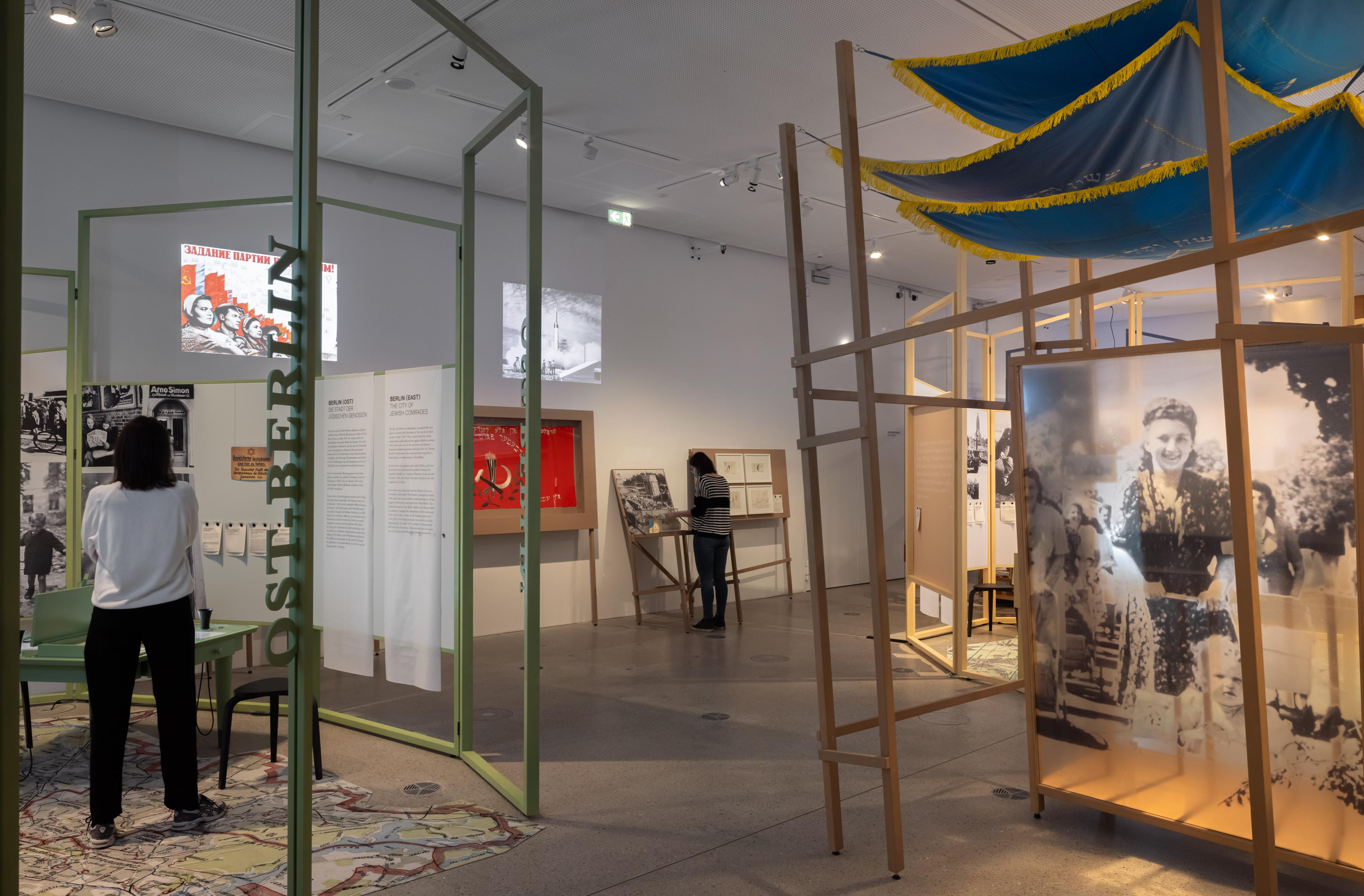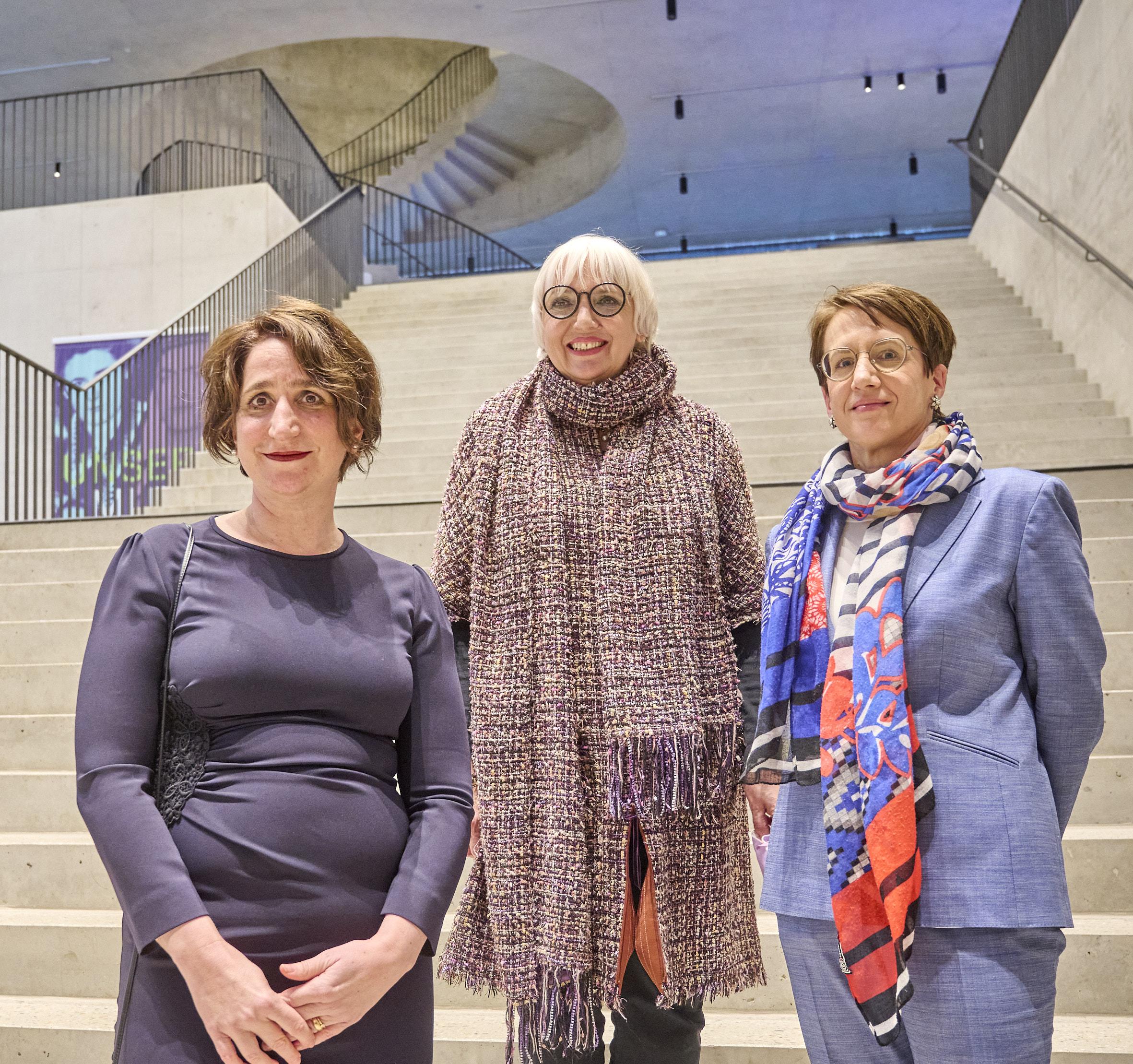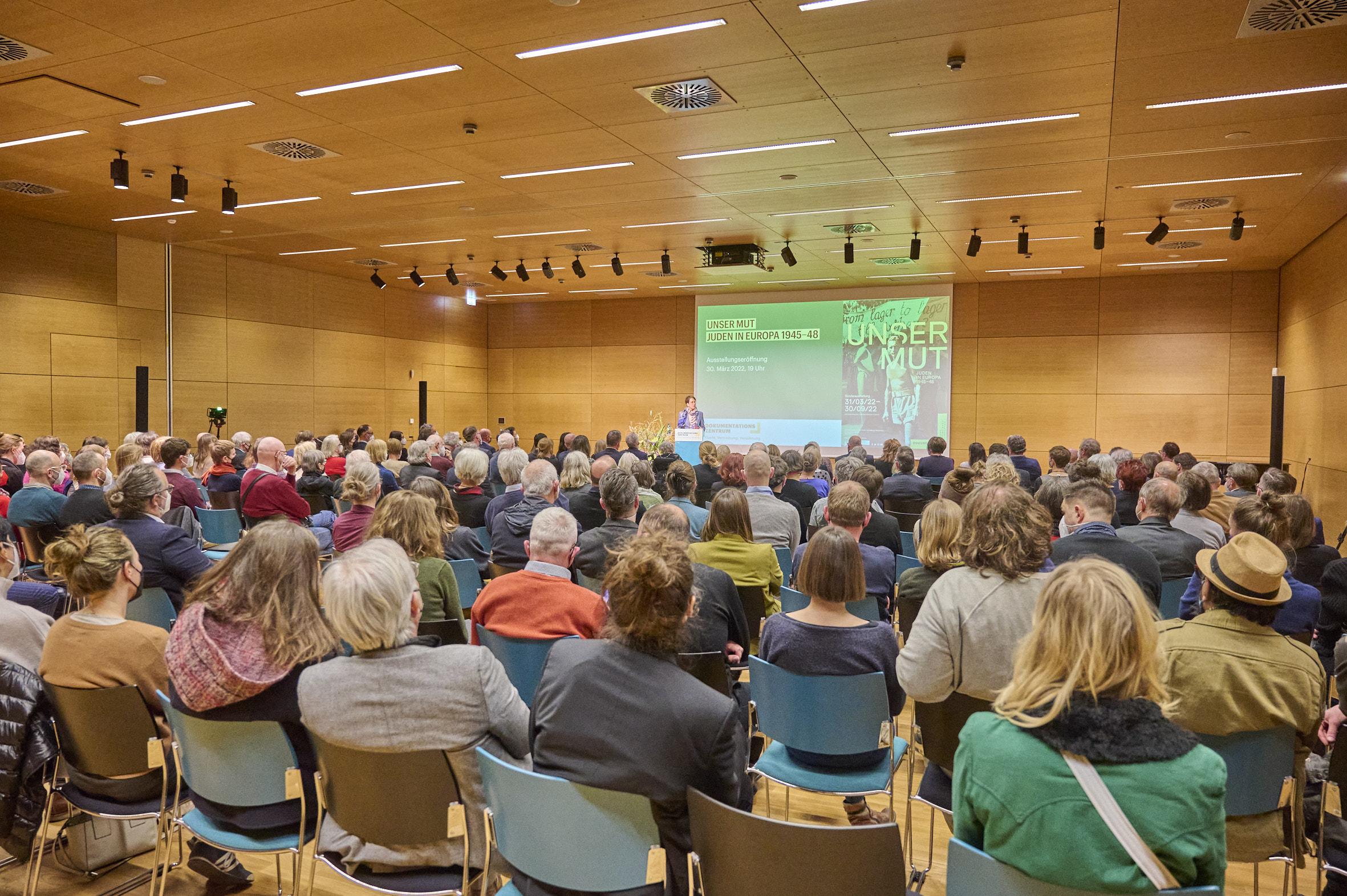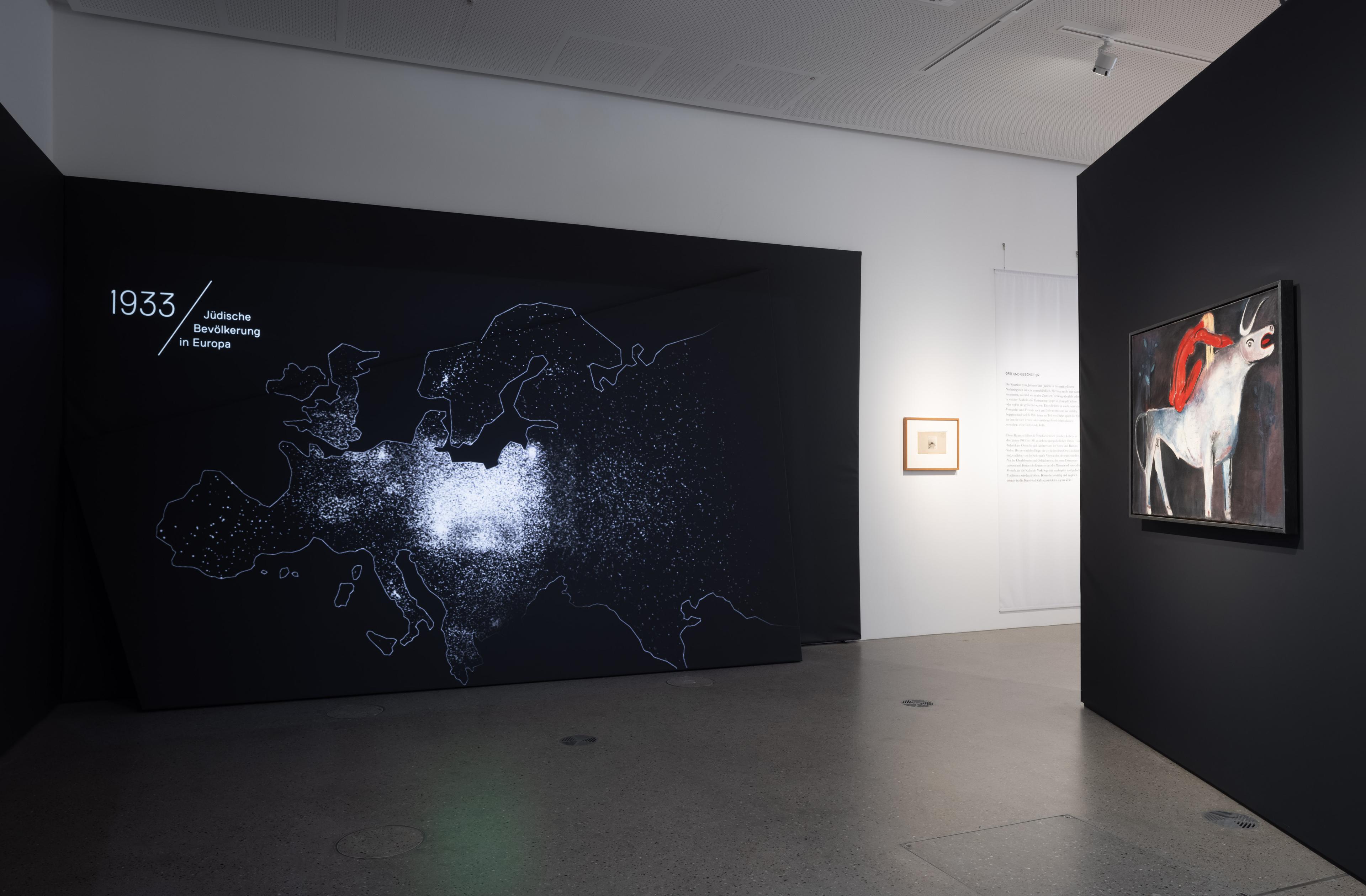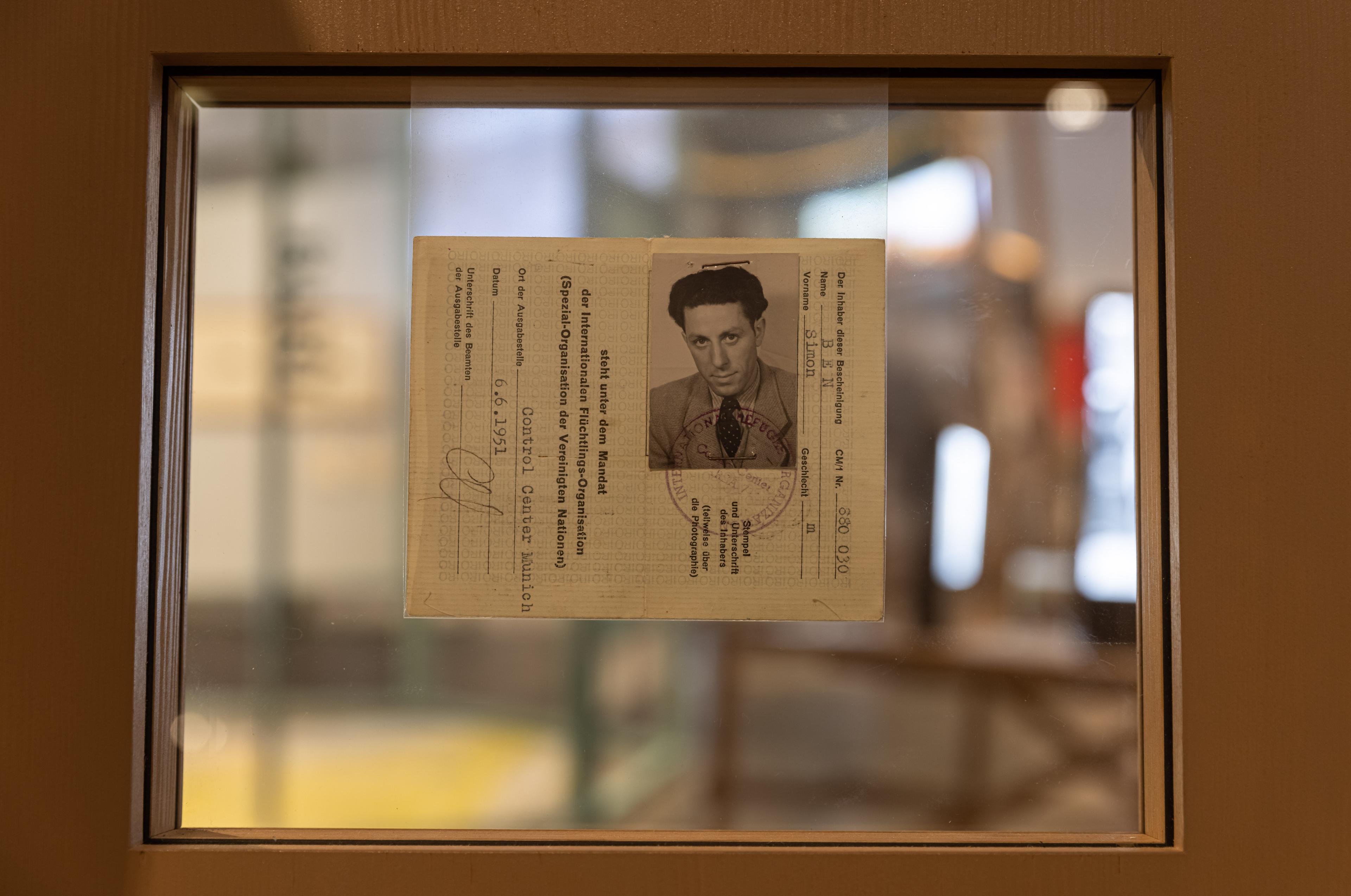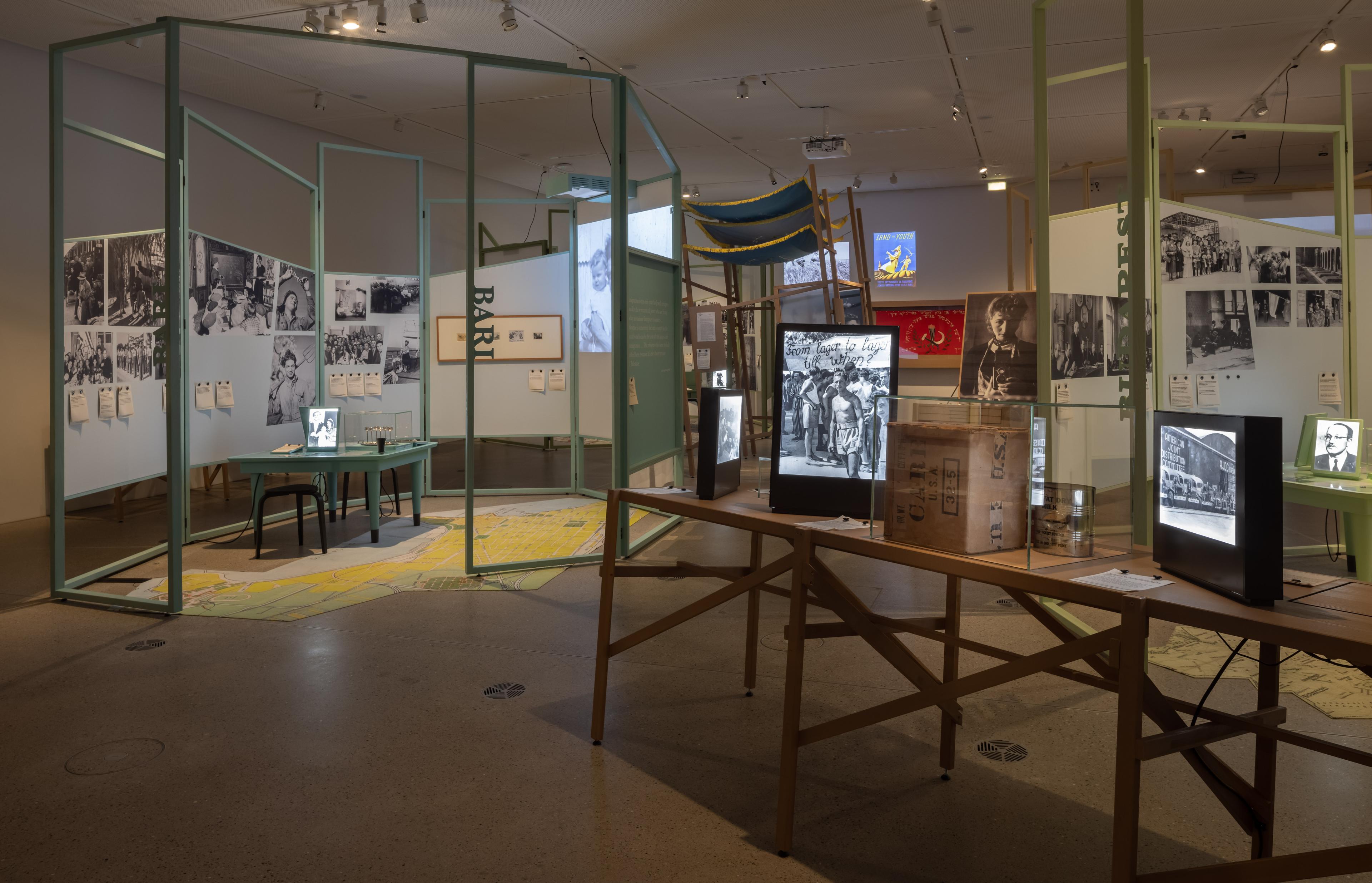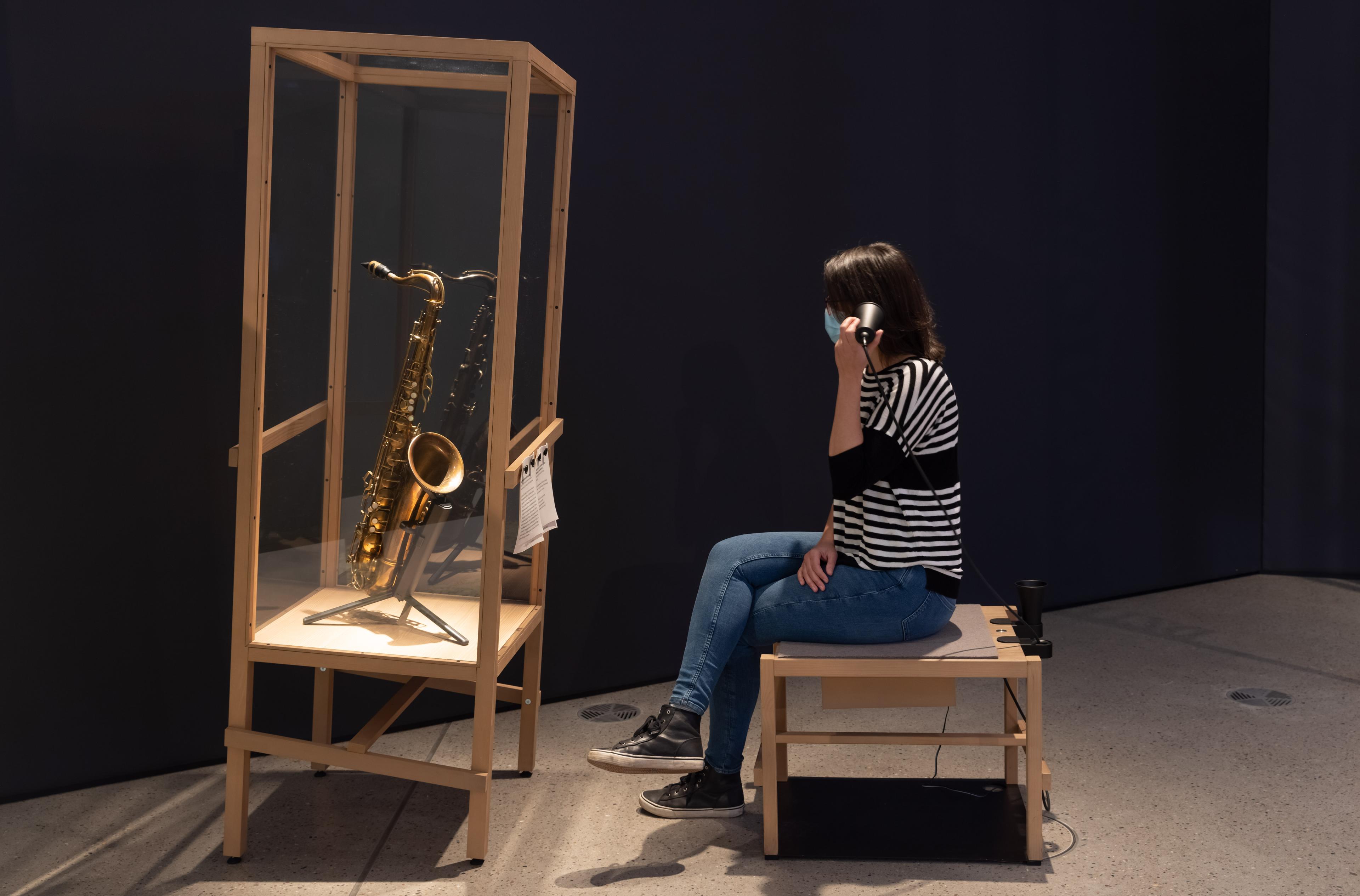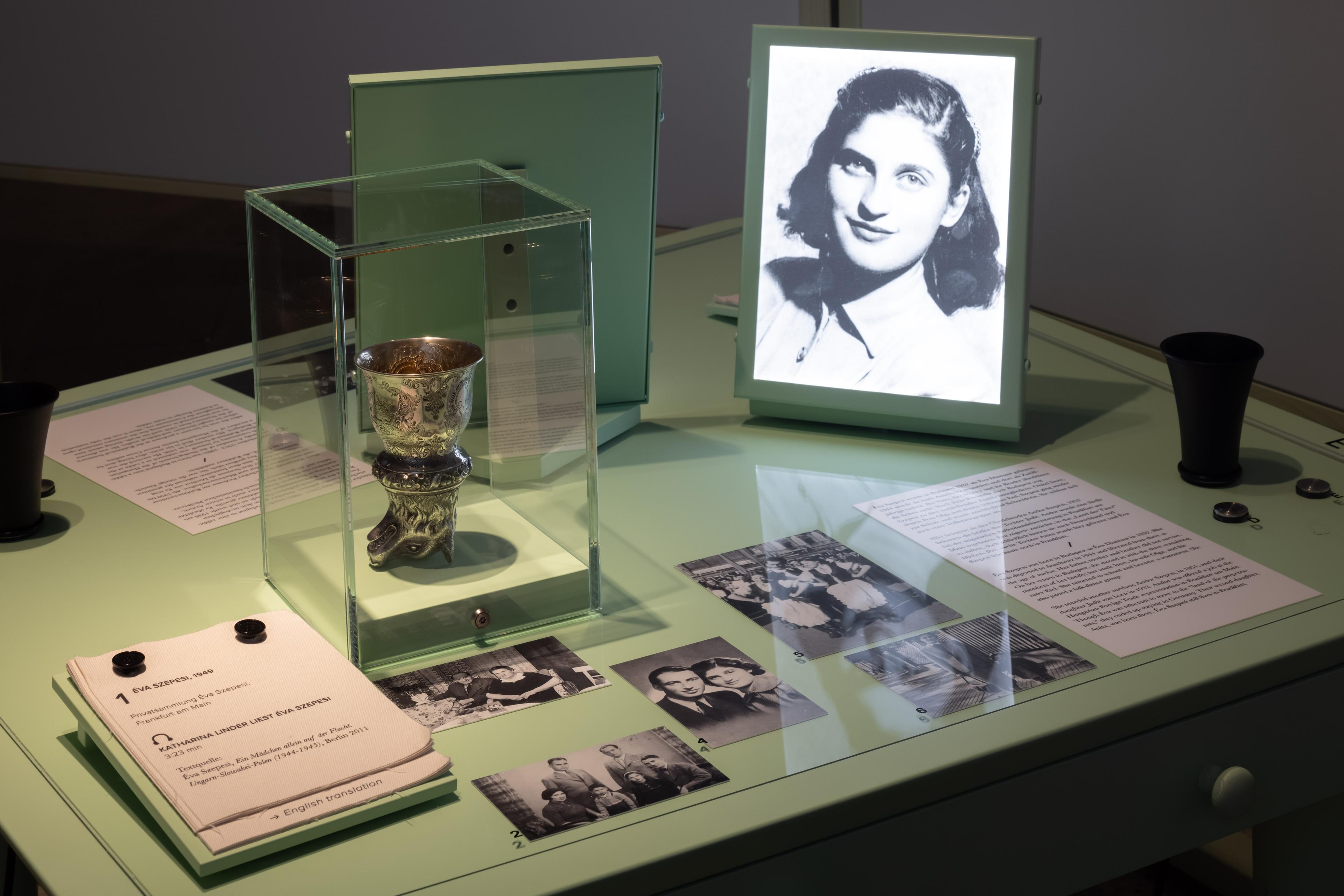Our Courage: Jews in Europe 1945–48
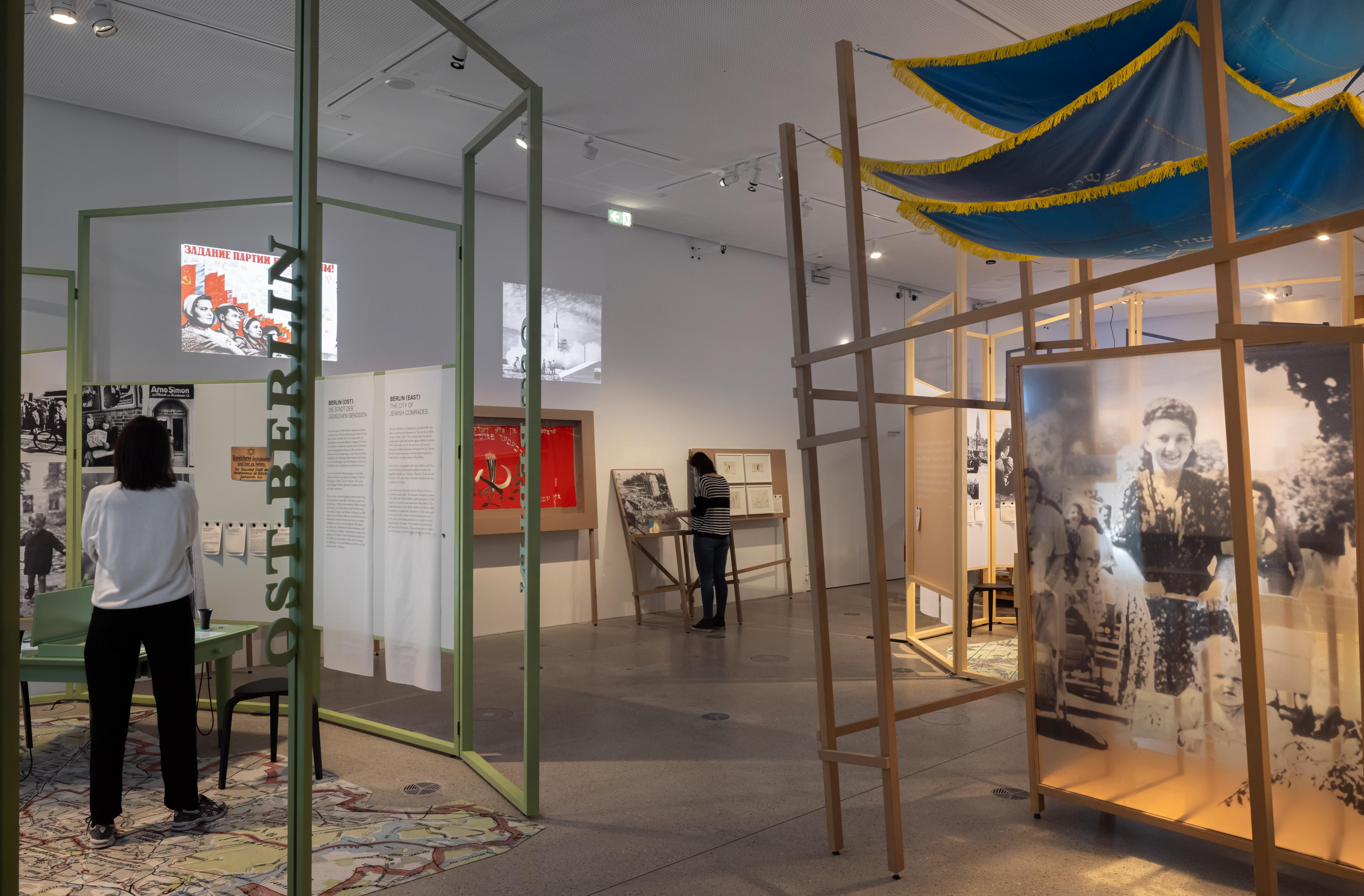
From Białystok to Frankfurt to Amsterdam, from Berlin to Budapest to Bari: ‘Our Courage’ is the first exhibition to present the post-war Jewish experience of displacement, expulsion, self-affirmation and reconstruction from a pan-European, transnational perspective. The exhibition will open on 30 March at the new Documentation Centre for Displacement, Expulsion, Reconciliation in the presence of Minister of State Claudia Roth and eyewitness Abraham Ben. It was conceived by the Jewish Museum Frankfurt, where it was on display until early 2022.
In 1933, around 10 million Jews lived in Europe and the Soviet Union. Around 3.5 million survived the years of Nazi disenfranchisement, persecution and murder. What happened to them immediately after the end of the war and how they shaped their lives after surviving was neither researched nor publicly discussed for decades. The exhibition ‘Our Courage’ aims to change this. It is based on a multi-year research project on the living conditions of Jews in selected locations in Central Europe, which was carried out by the Jewish Museum Frankfurt in cooperation with the Leibniz Institute for Jewish History and Culture – Simon Dubnow. Building on these research findings, the exhibition emphasises that Jewish survivors did not form a homogeneous group of passive victims, but largely organised and actively shaped their lives in the immediate post-war period. The exhibition title ‘Our Courage’ emphasises this determination to shape their own lives; it refers to a Yiddish partisan song from 1943 as well as to the name of the first newspaper in the Zeilsheim DP camp in Frankfurt.
The years 1945–48 are associated with experiences that continue to shape Jewish life today: Jewish soldiers in the Allied armies liberated survivors from hiding places and concentration and extermination camps as victors. Emigrants, survivors and soldiers attempted to document and punish the mass murder. Under the protection of the US military administration, camps for Jewish refugees were set up. Jewish communities were rebuilt and pre-war traditions revived. These were years of displacement, self-assertion and the search for a home and justice. Artistic and cultural production during this period was particularly diverse and intense.
The exhibition ‘Our Courage’ traces the diverse experiences of Jews in the immediate post-war period through personal testimonies and seven selected cities and communities: In Eastern Europe, most survivors find no relatives, but hostile neighbours who have enriched themselves with their possessions. Many fled further west to displaced persons camps run by the US military administration, such as in Frankfurt-Zeilsheim, and from there later via transit cities such as Bari to the British Mandate of Palestine or the USA. Others went to the Soviet zone out of conviction, for example to East Berlin, to participate in the construction of a socialist community. In Budapest and Amsterdam, survivors were able to draw on the structures and institutions of their pre-war communities and rebuild them. Many of them settled there permanently. While it was not possible to maintain a Jewish community in Białystok, the Lower Silesian community of Dzierżoniów developed for a few years into a semi-autonomous area offering hope for a flourishing Jewish life after the Shoah.
The exhibition ends in a room that focuses on the year 1948 as a turning point in the post-war period. The UN General Assembly decides both to divide the British Mandate of Palestine into a Jewish and an Arab state and to establish the principles of a new international legal order: the Convention on the Prevention and Punishment of the Crime of Genocide and the Universal Declaration of Human Rights. Both principles were prepared by Jewish emigrants from Europe and drew lessons from the mass murder of European Jews. In the same year, David Ben Gurion proclaimed the independent State of Israel. With the onset of the Cold War, the dissolution of the refugee camps and the founding of Israel, most Jews left Europe.
A catalogue accompanying the exhibition has been published by De Gruyter Verlag in German and English (360 pages, €29.90). The book provides detailed portraits of the cities and individuals featured in the exhibition and includes ten scholarly essays by renowned international authors.
The exhibition was curated by Dr Kata Bohus and Erik Riedel (Jewish Museum Frankfurt), with Dr Werner Hanak (Jewish Museum Frankfurt) as curatorial project manager. The team was advised by Prof. Dr Atina Grossmann (Cooper Union, New York City) and Dr Elisabeth Gallas (Leibniz Institute – Simon Dubnow, Leipzig). The exhibition design is by gewerkdesign, Berlin.
The exhibition is accompanied by a programme of events, which can be viewed at flucht-vertreibung-versoehnung.de.
Duration
31/03/22–30/09/22
